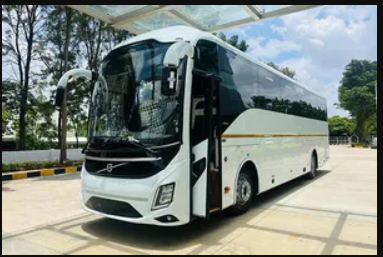Ladakh, often referred to as the “Land of High Passes,” is a mesmerizing region located in the northernmost part of India. Nestled between the Karakoram and Himalayan mountain ranges, Ladakh is known for its surreal landscapes, ancient monasteries, crystal-clear lakes, and unique Tibetan-Buddhist culture. Over the years, Ladakh tourism has gained immense popularity among travelers seeking adventure, peace, and cultural experiences. Whether you’re a biker, a trekker, a photographer, or a spiritual seeker, Ladakh promises an unforgettable journey.
1. Leh – The Gateway to Ladakh
Leh, the capital of Ladakh, is often the starting point for exploring the region. Located at an altitude of over 11,000 feet, Leh offers a perfect blend of natural beauty and cultural heritage.
Highlights:
Leh Palace: A 17th-century palace offering panoramic views of the town.
Shanti Stupa: A white-domed Buddhist stupa with breathtaking sunset views.
Leh Market: Ideal for shopping local handicrafts and Tibetan souvenirs.
Hall of Fame Museum: A tribute to Indian soldiers and Ladakhi culture.
Leh is not only a logistical base but also a cultural hub central to Ladakh tourism.
2. Pangong Lake – The Iconic Beauty
One of the most photographed places in India, Pangong Tso (Lake) is a high-altitude lake located at an elevation of about 14,270 feet. It gained fame from Bollywood films, especially 3 Idiots.
Highlights:
The lake stretches from India to China and changes colors throughout the day.
Camping on the banks under a starlit sky is a surreal experience.
The lake freezes completely in winter, making it a year-round attraction.
Pangong Tso is the crown jewel of Ladakh tourism and a must-visit destination for every traveler.
3. Nubra Valley – A Desert in the Sky
Situated to the north of Leh, Nubra Valley is a high-altitude cold desert that surprises visitors with its sand dunes, lush greenery, and double-humped Bactrian camels.
Highlights:
Hunder Sand Dunes: Camel rides amidst a stark desert landscape.
Diskit Monastery: Home to a giant statue of Maitreya Buddha.
Shyok River: A serene backdrop for picnics and photography.
The contrast of sand dunes against snow-capped mountains makes Nubra Valley an unforgettable part of Ladakh tourism.
4. Khardung La – One of the World’s Highest Motorable Passes
Khardung La is a dream destination for bikers and adventure seekers. At over 18,000 feet, it offers thrilling rides and spectacular views of the snow-laden peaks.
Highlights:
Ideal for motorbiking, cycling, and photography.
Serves as the gateway to Nubra Valley.
Café and souvenir shops at the summit.
Khardung La is synonymous with adventure and has become an iconic spot within Ladakh tourism.
5. Tso Moriri – A Tranquil Escape
Lesser known but equally stunning, Tso Moriri is a beautiful lake located in the Changthang region. Surrounded by snow-capped mountains, it is quieter and less commercialized than Pangong Tso.
Highlights:
A haven for birdwatchers with migratory birds and bar-headed geese.
Remote location ideal for solitude and reflection.
Korzok Monastery nearby adds a spiritual touch to the visit.
Tso Moriri is a gem of Ladakh tourism, perfect for those seeking peace and solitude.
6. Zanskar Valley – The Remote Wonder
Zanskar Valley is one of the most isolated regions in Ladakh, known for its rugged terrain, ancient monasteries, and adventurous trekking routes.
Highlights:
Chadar Trek: A winter trek over the frozen Zanskar River.
Phugtal Monastery: Built into a cliffside cave.
White water rafting and mountain expeditions.
Zanskar offers a raw and unfiltered view of Ladakh and is a paradise for true adventurers exploring Ladakh tourism.
7. Monasteries of Ladakh – Spiritual Heritage
Ladakh is dotted with centuries-old monasteries that reflect its deep-rooted Buddhist culture and tranquil way of life.
Must-visit Monasteries:
Hemis Monastery: Largest and wealthiest monastery in Ladakh.
Thiksey Monastery: Known for its resemblance to the Potala Palace in Lhasa.
Alchi Monastery: Famous for its unique Kashmiri-influenced artwork.
These monasteries are integral to the spiritual side of Ladakh tourism, attracting seekers from across the world.
8. Festivals and Culture – Colorful Celebrations
Ladakh’s culture is deeply influenced by Tibetan traditions, and its festivals are vibrant, colorful, and spiritually enriching.
Famous Festivals:
Hemis Festival: A grand celebration at Hemis Monastery.
Losar: Tibetan New Year marked with dance, food, and rituals.
Ladakh Festival: Showcasing local music, dance, and sports.
Participating in a local festival offers a deeper insight into the cultural heart of Ladakh tourism.
Travel Tips for Ladakh Tourism:
Acclimatization is key: The high altitude can cause AMS (Acute Mountain Sickness); take it slow on arrival.
Best time to visit: May to September is ideal; winter visits require special preparation.
Permits: Some areas require Inner Line Permits, especially near the borders.
Connectivity: Mobile networks are limited; BSNL and Jio work best in the region.
Conclusion
Ladakh is not just a travel destination—it is an experience that stays with you forever. From the thrill of conquering high passes to the peace found in ancient monasteries, Ladakh tourism offers a diverse and enriching palette of experiences. Whether you seek adventure, culture, or tranquility, Ladakh’s surreal beauty and warm-hearted people will leave you spellbound. Plan your trip today and embark on a journey through the roof of the world.





Leave a Reply
You must be logged in to post a comment.